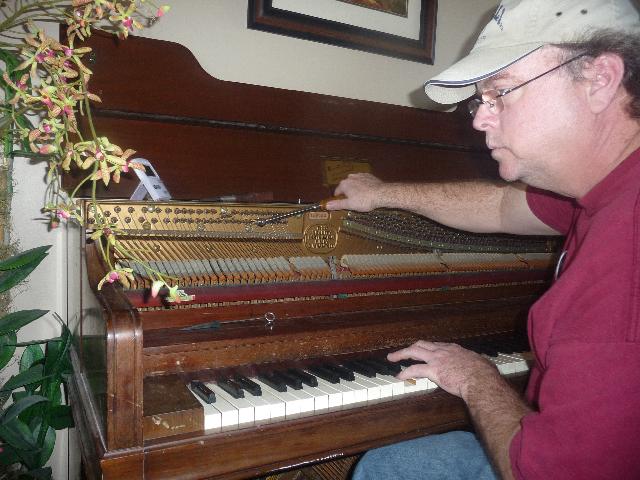

This is known as "just intonation." This table is just a guide and not hard rules. In the last bullet above, we saw that a chord can sound out of tune even though every member of the chord is showing as in tune on a tuner. If the third was to be played perfectly according to a tuner, it would be out of tune with the rest of the chord. For a chord to sound in tune, the third will need to be lowered (lowered by 14 cents) and the fifth will need to be raised (raised by 2 cents). A major chord is made of three notes (the root, the third, and the fifth). Not enough air support will make the note flat. For wind instruments and vocalists, air support can impact a note's intonation. You might be able to fix this by finding a different fingering combination. Some fingerings have natural tendencies to be flat or sharp. However, many instruments have multiple ways to play the same pitch (For example: on a trumpet, pressing the first and second valve is the same as pressing just the third valve). The same is true for all wind instruments. When a trombone player extends the slide, the pitch gets lower. An easy example to picture is the trombone. Wind instruments change the pitch by making the instrument longer or shorter.


Instruments will require periodic tuning after an hour of continuous play. This can be challenging if the ambient temperature is extreme and for wind players as instruments heat up as they play due to hot air. If an instrument is cold, it will tend to be flat. Temperature can cause an instrument to be out of tune.Write down what you needed to do in order to make the adjustment in your practice journal or notate it in your music.Repeat this process until you can consistently hit the note in tune.When you get to the problem note, try to hit it with the adjustment in mind. Remember the adjustment you made and replay the passage.This might mean changing fingerings, adjusting your embouchure, or playing around with your air support. Try to adjust the note so that it gets in tune (the strobe will stay steady). Once you have found those problem notes, play the passage of music slowly and then stop and hold the problem note and look at the tuner.For example, on wind instruments, there are certain fingerings that will naturally be sharp or flat. These might be problem notes that are specific to you or they might be due to tendencies with your instrument. Identify the problem notes by playing through a short passage of music (no more than 15 measures).Start by checking to see if your instrument is generally well-tuned.Here is a process to fix any out-of-tune notes.
#Piano tuner near me in 77351 how to
How To Practice With A TunerĮven if your instrument is in tune, there might still be pitches within a musical passage that just don't sound right. Change the microphone setting to allow this site. Safari: Safari > Preferences, then click Websites. Firefox: Go to Preferences -> click Privacy & Security -> Scroll down to permissions and select Settings. Chrome: Go to Settings -> Site Settings -> Microphone and allow this site to access the microphone. If you have disabled it in the past, then the tuner will not work. This tuner will require mic access through your web browser. If the needle and strobe are centered and steady, then your instrument is tuned. Make an adjustment to your instrument, either by adjusting a slide, a peg, or whatever your instrument's equivalent is.If you had to bring the pitch down, then you were sharp.

If you had to bring the pitch up, you were flat.


 0 kommentar(er)
0 kommentar(er)
